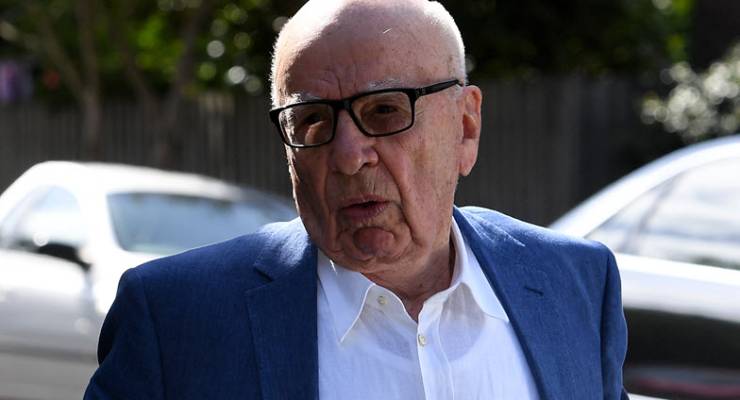
The big change in the government’s media reform package has always been the proposed abolition of the two out of three rule — which prevents the same owner holding a TV licence, a radio licence and an associated newspaper in a market.
Because of changes in the media industry, however, the two out of three rule — the abolition of which was mooted by the Howard government in 2006 but abandoned to get the National Party on board — is now more important than ever, because its abolition will deliver four out of four to the Murdoch family. It will be able to control not merely radio licences, newspapers, Sky News (now controlled by News Corp) but, most crucially, a free-to-air television network.
News Ltd, now News Corp, has long come off second best in the major media reforms of recent years — it missed out on the Howard government’s digital television changes in 1999-2000, and then again in the 2006 media ownership reform round (only those with the finest memories will recall “use it or lose it” on anti-siphoning). But the removal of two out of three at this point will give it a position of media power never before seen in Australia. Newspapers can set the political agenda, but they can’t match free-to-air television for sheer influence. Political parties know that the images and stories that go to air each night during an election campaign influence how undecided voters jump. It is the wrath of the free-to-air networks that they really fear — even now. That’s why free-to-air networks have always emerged the winners from previous media reform efforts, rather than Murdoch. And News Corp will finally return to free-to-air if these changes proceed.
Moreover it will do so when its capacity to frighten politicians is diminishing as its newspaper readerships contract to an old white base that is already rusted-on conservative, and partisan campaigns by tabloids like Sydney’s Daily Telegraph demonstrably fail to shift voters.
Long-term, the numbers don’t add up — Ten is a basket case (partly because of Lachlan Murdoch’s tenure as interim CEO and chair) and unlikely to return to the kind of profitability it enjoyed in the 2000s any time soon. Attaching it to a collection of declining newspapers and a struggling pay TV service might afford some synergies (AKA job cuts) but won’t address the massive structural challenges each sector faces. But for the time being it will give the Murdochs virtually unlimited power to shape the political agenda and then scare political parties into line.
That’s not to say two out of three is a particularly good rule — it’s a blunt numerical instrument that doesn’t recognise basic media realities (neither national newspaper is caught by the rule, nor is pay TV). But along with the media groups rule (the 4/5 rule, which is the lower limit of media groups permitted in each media market) it is a key diversity protection mechanism. It shouldn’t be removed without replacement by another, hopefully better, diversity protection measure. Ideally that would be a national media diversity test encompassing all major media, including online, which would set a threshold level of nationally significant media groups. Any merger leading to a reduction in the number of those groups would be prohibited.
Under the government’s proposals, however, there would be minimal diversity protection. And we’d get the media we deserve as a result.








It’s nice to see a government doing as they’re told – so now for all the good free press dividend, to keep His Limited News Party elected and in control of favours?
…. Which just leaves that little matter of the left-wing of the ABC….?
It f0llows that we have the government we deserve delivered by the media we deserve. We allowed it to happen, folks, asleep at the wheel of apathy.
Oh Boy, just when you thought it couldn’t get worse, the LNP offer up another method to help existing media giants to expand, and further concentrate Australia’s media ownership.
As with all PM’s since Whitlam, Turnbull visited Murdoch (in New York) shortly after he gained the PM role from the Abbottrocity. Looks like Murdoch would call that meeting fruitful.
Turnbull must surely give a heartfelt thanks to Murdoch for having his empire go extremely quietly on the Abbott challenge, and the doubling deficit / economic incompetence lines that Limited News abused to daily thrash to the ALP to death.
How true Pollie, and doubly lucky that MT only needs an occasional whisper in Guthrie’s ear to make ABC criticism go quiet as well – but even with all this luck the LNP still hangs on by a thin thread, oblivion waiting in the wings…!!
Rupert owns Australia and Prime Minister Malcolm Turnbull is his good boy!
Every day, in every way Talcum continues to find yet more ways to abase himself when few would have thought it possible for him to grovel even lower.
As I said in a previous comment, it doesn’t work to suck upso hard to the mudorc.
Sooner rather than later, the moment he sees an advantage he will turn on a toady who has served his malign purposes.